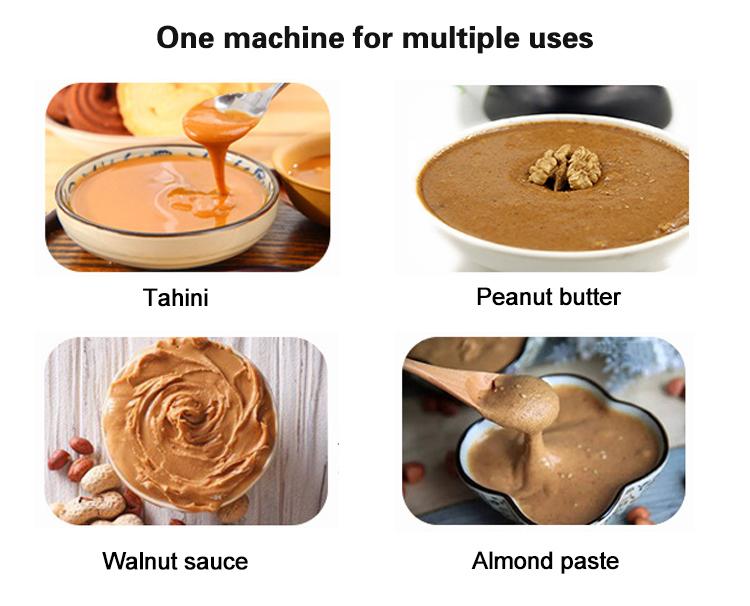Introduction
Sesame paste machines are essential equipment for producing highquality sesame paste, a key ingredient in many cuisines worldwide. Whether you're a smallscale producer or a large food processing facility, investing in the right sesame paste machine can significantly improve your production efficiency and product quality. This article will guide you through the benefits of sesame paste machines, how to choose the best one, common issues, usage tips, and the latest industry trends.
1. What is a Sesame Paste Machine and Why Do You Need One?
Function: A sesame paste machine is designed to grind roasted sesame seeds into smooth, creamy paste, commonly used in dishes like hummus, tahini, and sauces.
Benefits:
Consistency: Produces uniform and smooth paste, free from lumps.
Efficiency: Saves time and labor compared to manual grinding methods.
Versatility: Can also be used to process nuts, seeds, and other ingredients into butter or paste.
2. How to Choose the Right Sesame Paste Machine
Determine Your Needs:
Home Use: Ideal for small batches, with compact designs and easy operation.
Commercial Use: Suitable for restaurants or small businesses, offering higher capacity and durability.
Industrial Use: Designed for largescale production, with advanced features like automation and continuous operation.
Key Features to Consider:
Capacity: Choose a machine that matches your production volume (e.g., 5 kg/hour for home use, 50 kg/hour for commercial use).
Material: Stainless steel construction ensures durability, food safety, and easy cleaning.
Grinding Mechanism:
Stone Grinders: Traditional method for ultrasmooth paste.
Steel Grinders: Faster and more efficient for larger volumes.
Ease of Cleaning: Look for models with detachable parts for hasslefree maintenance.
3. Tips for Using a Sesame Paste Machine
Preparation:
Roast sesame seeds evenly to enhance flavor and ensure smooth grinding.
Allow the seeds to cool slightly before grinding to avoid overheating the machine.
Operating Steps:
1. Assemble the machine and ensure all parts are securely attached.
2. Feed the roasted sesame seeds into the hopper.
3. Adjust the grinding settings to achieve the desired paste consistency.
4. Collect the paste in a container and store it in an airtight jar to maintain freshness.
Cleaning and Maintenance:
Disassemble and clean all parts after each use to prevent residue buildup.
Regularly inspect and lubricate moving parts to ensure smooth operation.
4. Common Issues and Solutions
Issue 1: Paste is Too Thick or Lumpy
Solution: Adjust the grinding settings or add a small amount of oil to achieve a smoother consistency.
Issue 2: Machine Overheating
Solution: Avoid overloading the machine and allow it to cool down between batches.
Issue 3: Uneven Grinding
Solution: Ensure the sesame seeds are evenly roasted and fed into the machine.
5. Industry Trends
Automation: Advanced sesame paste machines now feature automated feeding and grinding systems, reducing labor costs and increasing efficiency.
Hygienic Design: New models prioritize easy cleaning and food safety, with seamless surfaces and detachable components.
MultiFunctionality: Some machines can also process nuts, seeds, and spices, making them versatile additions to any kitchen or production line.
Sustainability: Energyefficient motors and ecofriendly materials are becoming more common in modern sesame paste machines.

Conclusion
A sesame paste machine is a valuable investment for anyone involved in food processing, from home cooks to largescale producers. By choosing the right model and following proper usage and maintenance practices, you can significantly enhance your sesame paste production process. Explore our range of highquality sesame paste machines on our independent website and take your food processing to the next level!
Call to Action (CTA)
Shop Now: Visit our website to browse our selection of sesame paste machines and find the perfect model for your needs.
Contact Us: Have questions or need assistance? Our customer support team is here to help!










